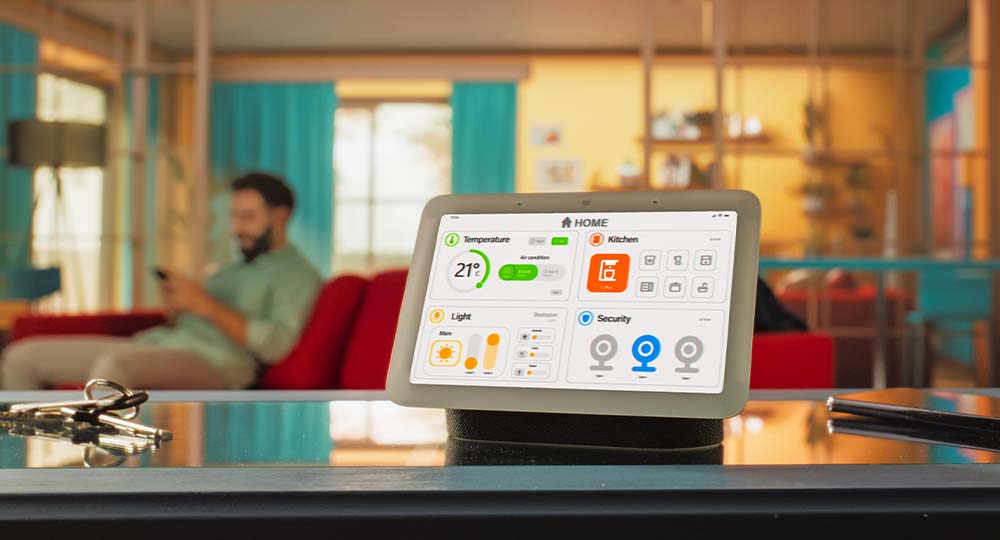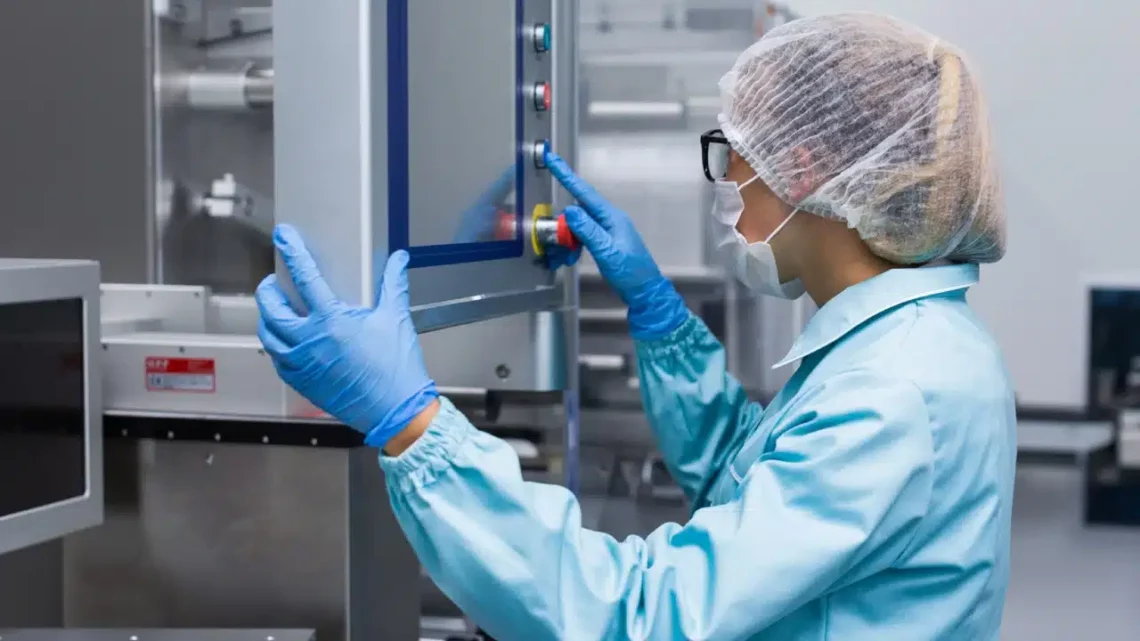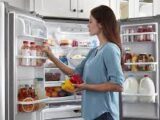Automated Temperature Monitoring: Reducing Risk with Smart Technology
September 17, 2025How Does Automated Temperature Monitoring Work and What Are Its Components?
Automated temperature monitoring represents a revolutionary shift from manual temperature checks to intelligent, continuous surveillance systems that operate without human intervention. This technology has become indispensable across industries where temperature control directly impacts safety, compliance, and product integrity.
The foundation of automated temperature monitoring systems lies in three critical components that work seamlessly together:

- IoT Sensors: The Data Collection Foundation
IoT sensors serve as the frontline data collectors, continuously measuring ambient and product temperatures with precision. These devices can detect temperature fluctuations within seconds, providing accuracy levels that manual methods simply cannot match.
2. Cloud-Based Systems: The Intelligence Hub
Cloud platforms process and store vast amounts of temperature data, enabling real-time analysis and historical tracking. You gain access to comprehensive dashboards that display current conditions and identify patterns across multiple locations simultaneously.
3. Wireless Communication Networks
Modern systems utilise robust wireless communication methods including:
- Wi-Fi for high-bandwidth, local area connectivity
- LoRaWAN for long-range, low-power applications spanning large facilities
The monitoring process operates through continuous data collection cycles. Sensors capture temperature readings at predetermined intervals, transmitting this information wirelessly to cloud-based systems. Real-time alerts notify you instantly when temperatures deviate from acceptable ranges, enabling immediate corrective action before product damage or compliance violations occur.
This automated approach eliminates the inconsistencies and gaps inherent in manual monitoring whilst providing comprehensive audit trails essential for regulatory compliance.
More about: Wireless Freezer Temperature Monitoring: Safeguarding Cold Storage
Why Is Automated Temperature Monitoring Critical for Food Safety Management?
Manual temperature monitoring in foodservice operations presents significant challenges that can compromise food safety compliance. Staff members juggling multiple responsibilities often forget scheduled temperature checks, leading to gaps in monitoring records. Human error becomes inevitable when employees rush through temperature readings, record incorrect data, or fail to notice gradual temperature fluctuations that could indicate equipment malfunction.
The Limitations of Traditional Methods
Traditional paper-based logging systems create additional vulnerabilities. Handwritten records can become illegible, lost, or deliberately falsified to cover missed checks. You might discover these documentation gaps only during health inspections, potentially resulting in costly violations or temporary closures.
HACCP protocols demand precise temperature control at critical points throughout food handling processes. Automated temperature monitoring systems eliminate these human error factors by providing continuous, accurate data collection. Smart sensors capture temperature readings every few minutes, creating comprehensive digital records that meet regulatory requirements without relying on staff memory or availability.
The Benefits of Automation
These systems support food safety compliance by generating automatic alerts when temperatures deviate from safe ranges. You receive immediate notifications via mobile devices or email, enabling rapid corrective action before food spoilage occurs. Digital dashboards display real-time temperature data across all monitoring points, giving you complete visibility into your cold chain performance.
Automated record-keeping ensures compliance documentation remains accurate, tamper-proof, and readily accessible for health inspectors. This systematic approach transforms temperature monitoring from a reactive task into a proactive food safety strategy.
How Does Automated Temperature Monitoring Improve Cold Chain Logistics?
Cold chain logistics is a crucial part of modern supply chains, ensuring that temperature-sensitive products are transported with precision from their starting point to their final destination. Perishable items like fresh fruits and vegetables, dairy products, frozen foods, and pharmaceuticals require strict temperature control to maintain their quality and safety. Even a slight increase or decrease in temperature can spoil these goods, resulting in significant financial losses.
The Limitations of Traditional Cold Chain Management
In the past, cold chain management relied heavily on manual temperature checks at loading points and destinations. This method had its drawbacks:
- Gaps in monitoring: There were large gaps in temperature monitoring during transit, where temperatures could fluctuate without being detected.
- Blind spots: These blind spots created opportunities for temperature excursions to occur unnoticed, compromising the integrity of the products being transported.
- Safety risks: In some cases, consumers could be exposed to safety risks if improperly stored products made their way into the market.
The Role of IoT in Cold Chain Logistics
IoT-enabled temperature monitoring devices are changing the game for cold chain logistics. These devices use Internet of Things (IoT) technology to provide continuous visibility across the entire supply chain. Here’s how they work:
- Smart sensors: These devices are equipped with smart sensors that measure and record temperature at regular intervals.
- Real-time data transmission: The sensors transmit this data in real-time to a central system or cloud platform.
- Alerts and notifications: If temperatures go outside acceptable ranges, immediate alerts are sent out, allowing for quick action to be taken before any damage occurs.
Going Beyond Temperature Tracking
But it doesn’t stop there. Advanced cold chain monitoring systems offer even more features:
- GPS location tracking: These systems also integrate GPS technology to track the exact location of the cargo at all times.
- Humidity monitoring: Humidity levels can greatly impact certain perishable goods. By including humidity sensors in the monitoring system, businesses can ensure optimal conditions are maintained throughout transportation.
- Door opening alerts: Unauthorized access or prolonged door openings can lead to temperature fluctuations. With door opening alerts, businesses can be notified immediately if there are any breaches in security.
This comprehensive approach to cold chain management helps businesses identify not only when but also why temperature breaches occur. By understanding the root causes of these issues, companies can implement corrective measures and prevent future losses.
Benefits of Automated Temperature Monitoring
The benefits of automated temperature monitoring in cold chain logistics are significant:
- Minimised spoilage: With real-time visibility into temperature conditions, businesses can take proactive steps to address any issues before they result in spoilage.
- Improved product quality: By maintaining strict control over temperature throughout transportation, companies can ensure that their products arrive at their destination in optimal condition.
- Enhanced customer satisfaction: When customers receive fresh and high-quality products consistently, their satisfaction levels increase, leading to repeat business and positive reviews.
In summary, automated temperature monitoring powered by IoT technology is transforming cold chain logistics. By providing continuous visibility and enabling swift corrective actions, this innovative solution helps businesses overcome the limitations of traditional methods and achieve greater efficiency in their operations.
How Does Automated Temperature Monitoring Improve Healthcare Facility Operations?
Healthcare refrigeration requires absolute accuracy when storing life-saving medications and vaccines. Medical-grade refrigerators contain temperature-sensitive pharmaceuticals worth thousands of pounds, where even slight fluctuations can jeopardise medication integrity and make entire stock batches unusable. Traditional manual monitoring creates vulnerabilities that healthcare facilities cannot afford.
Vaccine storage has particularly strict requirements, with many vaccines needing consistent temperatures between 2°C and 8°C. A single temperature deviation can ruin an entire vaccine inventory, potentially costing facilities tens of thousands of pounds while endangering patient care. Automated systems remove these risks by providing constant monitoring that human oversight simply cannot match.
How Smart Temperature Monitoring Technology Transforms Healthcare Operations
Smart temperature monitoring technology transforms healthcare operations through:
- Real-time alerts: notifying staff immediately when temperatures drift outside acceptable ranges
- Continuous data logging: creating comprehensive audit trails for regulatory compliance
- Remote monitoring capabilities: allowing 24/7 oversight without constant physical presence
- Automated documentation: reducing administrative burden on healthcare staff
You gain significant operational advantages when implementing automated solutions. Staff can focus on patient care rather than hourly temperature checks, while automated systems provide the reliability that manual processes lack. The technology prevents costly product losses that occur when temperature fluctuations go unnoticed, safeguarding both your inventory investment and patient safety standards that healthcare facilities must uphold.
What Are The Operational And Financial Benefits Of Implementing Automated Temperature Monitoring Solutions?
The shift from manual temperature logging to automated systems delivers substantial cost savings and operational efficiency improvements across multiple business areas. Traditional manual monitoring requires staff members to physically check and record temperatures at regular intervals, consuming valuable time that could be allocated to core business activities.
Automated temperature monitoring eliminates these time-consuming tasks by providing continuous data collection without human intervention. Staff members no longer need to walk through facilities multiple times daily, manually recording readings from various monitoring points. This time reduction translates directly into labour cost reductions whilst simultaneously improving monitoring accuracy.
Key financial advantages include:
- Reduced labour expenses through elimination of manual checking routines
- Prevention of costly product losses due to temperature excursions
- Decreased insurance claims from spoiled inventory
- Lower compliance violation penalties
The technology delivers enhanced reliability compared to human-dependent processes. Manual systems are susceptible to missed checks, recording errors, and inconsistent timing. Automated solutions provide precise, timestamped data collection every few minutes, ensuring complete temperature history documentation.
You gain immediate alerts when temperatures deviate from acceptable ranges, enabling rapid corrective action before significant product loss occurs. This proactive approach prevents the substantial costs associated with replacing spoiled inventory, whether that’s food products, pharmaceuticals, or other temperature-sensitive materials.
The combination of reduced labour requirements and improved accuracy creates a compelling return on investment for businesses across industries.
How Can Businesses Get Started With Implementing Automated Temperature Monitoring Solutions?
The onboarding process for automated temperature monitoring begins with understanding your specific operational requirements. You need to assess your current temperature monitoring challenges, identify critical control points, and determine the scope of coverage required across your facilities.
Booking a demo represents the most effective first step when evaluating solutions like Squizify. During these discovery calls, you can:
- Discuss your unique operational needs with technical specialists
- Explore customised configurations for your industry requirements
- Review hardware options including IoT sensors and wireless communication methods
- Understand integration capabilities with existing systems
Platform selection criteria should focus on several key factors. You want a solution that offers scalability to grow with your business operations. The platform must provide robust security features, including encrypted data transmission and secure cloud storage. Look for providers offering 24/7 data accessibility and comprehensive support services.
Consider the technical infrastructure requirements. Your chosen solution should support multiple communication protocols such as Wi-Fi and LoRaWAN to ensure reliable connectivity across different environments. The system should integrate seamlessly with your existing operational workflows without disrupting daily activities.
Evaluate the customisation capabilities available through the provider. Solutions like Squizify offer tailored approaches through personalised demo sessions, allowing you to configure monitoring parameters specific to your compliance requirements and operational standards.
Moreover, businesses can leverage insights from various sectors to enhance their automated temperature monitoring strategies. For instance, the financial sector’s experience in adopting AI technologies can provide valuable lessons in building a robust AI infrastructure, which could be beneficial when implementing advanced technology solutions like automated temperature monitoring systems.

Conclusion
Automated Temperature Monitoring: Reducing Risk with Smart Technology represents a fundamental shift in how businesses approach temperature-sensitive operations. You gain unprecedented control over your critical processes whilst eliminating the costly risks associated with manual monitoring methods.
The smart technology benefits extend far beyond simple temperature tracking. You achieve:
- Enhanced safety standards through continuous monitoring and instant alerts
- Operational excellence via automated record-keeping and compliance documentation
- Reduced liability from temperature-related incidents and product losses
- Improved efficiency through streamlined workflows and data-driven insights
Your investment in automated temperature monitoring systems transforms reactive problem-solving into proactive risk management. You protect your reputation, safeguard your customers, and strengthen your bottom line through reliable, accurate monitoring.
The technology empowers you to meet regulatory requirements effortlessly whilst focusing on core business activities. You eliminate human error, reduce labour costs, and gain 24/7 visibility into your temperature-critical operations.
Smart temperature monitoring isn’t just about compliance—it’s about building a resilient, future-ready business that prioritises safety and operational excellence at every level.
Learn about: Wireless Freezer Temperature Monitoring: Safeguarding Cold Storage
10 FAQs with answers
Automated temperature monitoring is a system that continuously measures and records temperatures using IoT sensors, cloud platforms, and wireless communication, eliminating the need for manual checks.
IoT sensors capture temperature readings at set intervals and transmit the data wirelessly to cloud-based platforms. The system analyses this data in real-time and sends alerts if temperatures deviate from safe ranges.
The three main components are:
IoT sensors for precise data collection
Cloud-based systems for analysis, storage, and dashboards
Wireless communication networks (Wi-Fi, LoRaWAN, etc.) for seamless data transmission
Manual monitoring is prone to human error, missed checks, and inaccurate records. Automated systems provide continuous, tamper-proof data, real-time alerts, and compliance-ready reports.
Key industries include:
Foodservice & hospitality (HACCP compliance, food safety)
Cold chain logistics (fresh produce, frozen foods, pharmaceuticals)
Healthcare (vaccine and medicine storage)
Manufacturing & research (sensitive materials and lab samples
Automated systems eliminate gaps in monitoring, create accurate audit trails, and trigger alerts when temperatures fall outside safe ranges—helping businesses meet HACCP and health inspection requirements.
Yes. Automated systems track temperatures in real-time during transportation, provide GPS and humidity monitoring, and issue alerts for door openings or temperature fluctuations to protect perishable goods.
Healthcare facilities use automated monitoring to ensure vaccine and medication storage remains within strict temperature ranges, prevent costly product loss, and reduce staff workload with automated documentation.
Businesses save money by reducing labour costs, preventing product spoilage, avoiding compliance penalties, and lowering insurance claims from damaged goods.
The process starts with assessing operational needs and booking a demo with a provider like Squizify. Solutions are customised with the right sensors, wireless networks, and cloud integration to fit industry requirements.



